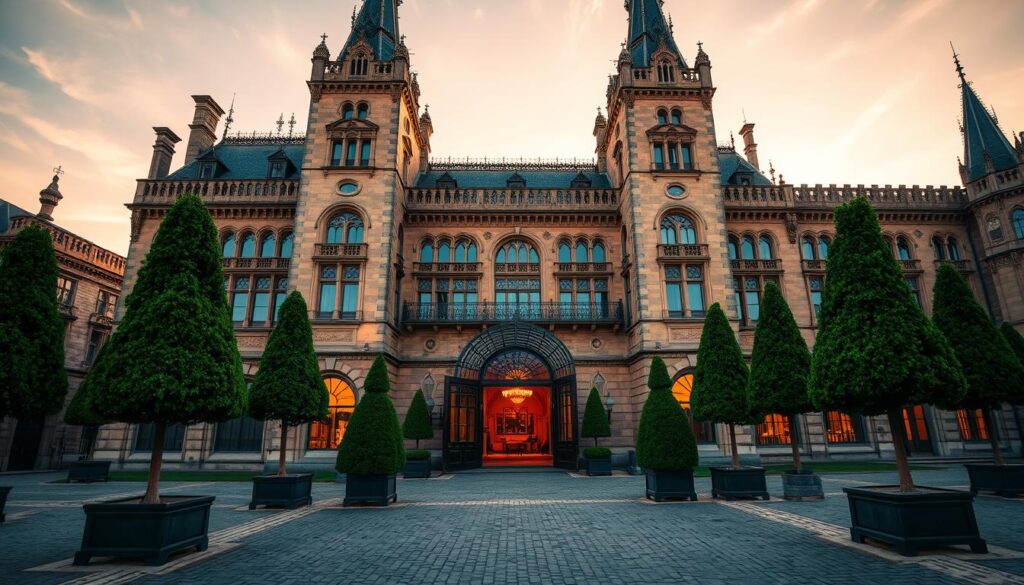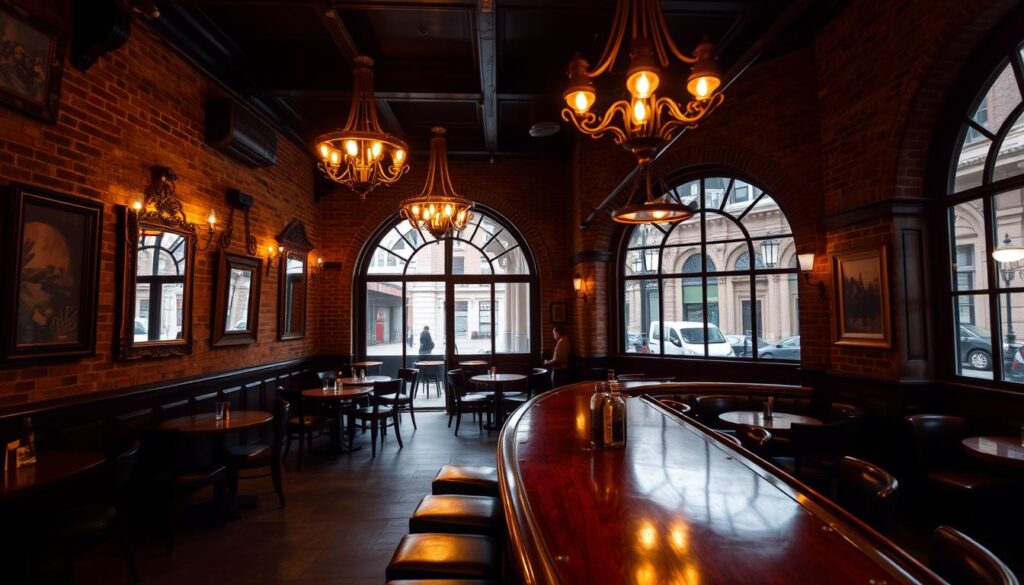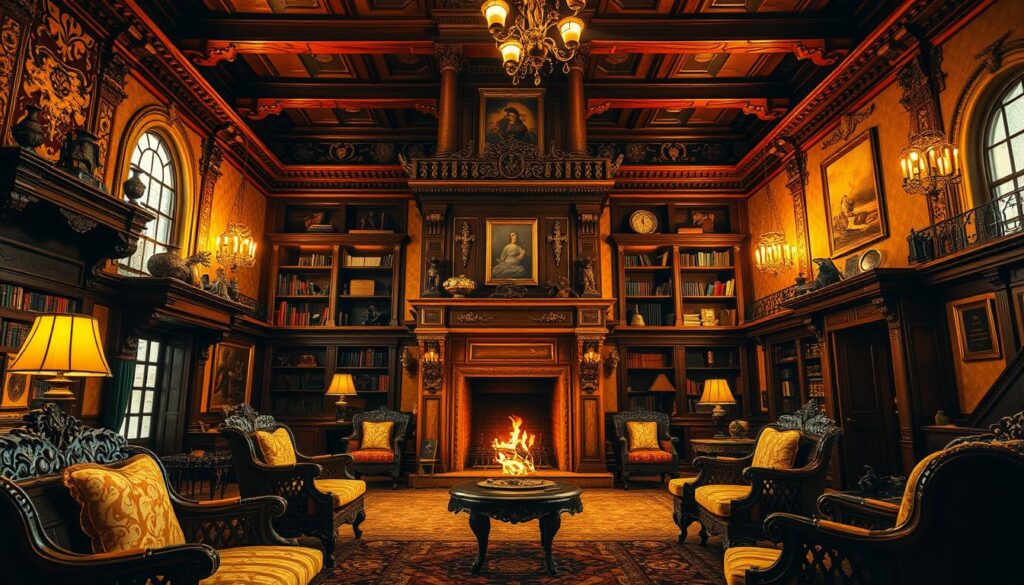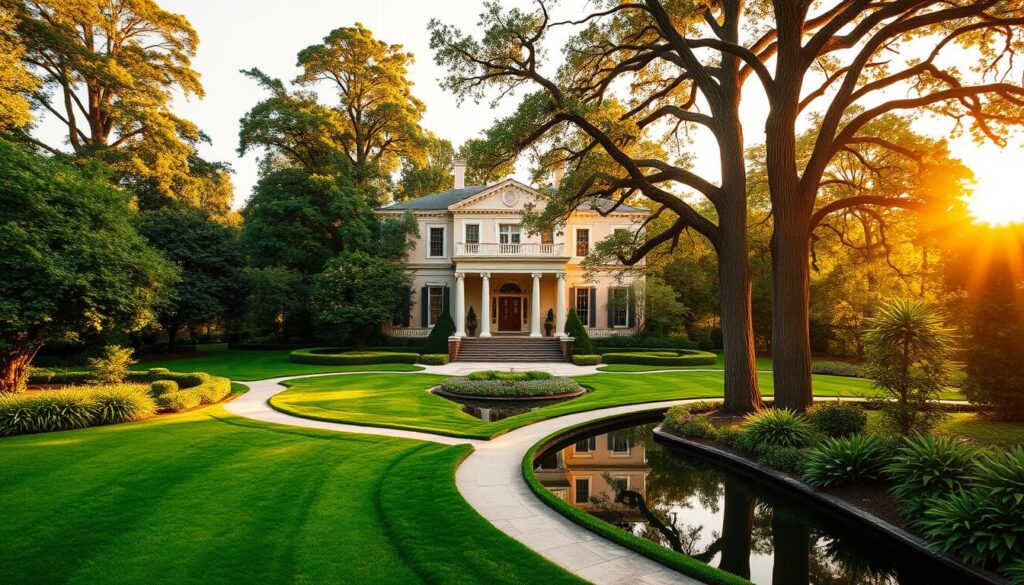Boutique holds the second largest number of Art Deco buildings within the United States. The midwestern city obtained its innovative style and design identity in the early 20th century because of its developing oil industry sector. Tulsa entered the 1920s Jazz Age when cultural growth brought forth the distinctive identity of the city.
During the times when oil barons along with architects arrived in the city they constructed beautiful Art Deco buildings. During a time of progress the art pieces expressed prosperity through their bold geometric lines. The ambition and artistry of Tulsa can be discovered in its downtown skyline and its renovated historic buildings.
The artistic structures from the past continue to survive today as historical testimonies to history. These buildings show how Tulsa grew from its early status into the location that became known as the Oil Capital of the World. New preservation initiatives started by the city because of its art and design appreciation help protect these masterpieces for upcoming generations.
Key Takeaways
- Tulsa counts among the cities in America with the largest number of buildings in the Art Deco style.
- The architectural transformation of Tulsa occurred after the 1920s oil boom took root in the city.
- Geometric designs together with bold lines represent the main characteristics of Art Deco style.
- The central area of Tulsa maintains numerous historical buildings that received essential conservation work followed by new productive uses.
- These Art Deco architectural landmarks of Tulsa document the city’s social as well as economic background.
Tulsa’s Rich Legacy and the Birth of Art Deco
The development of oil reserves located by the Arkansas River led to the successful growth of Tulsa into a prosperous urban center. The economic surge through prosperity and cultural enthusiasm produced new wealth which transformed the metropolis essence of the city. The 1920s brought innovation and style which turned Tulsa into a center for significant business figures and skilled architects from all over the nation.
Oil Boom and Cultural Transformation
During the second oil boom period the Arkansas River transformed Tulsa into an explosive urban center. The oil industry generated money which allowed citizens to construct influential architectural landmarks. The city’s transformation into its modern shape stems directly from the oil wealth which local historian Shane Hood explains “The oil boom didn’t create wealth only but served to construct a city.” Metropolitan businessmen started migrating to this period because they introduced modern design aesthetics to the area.
The new residents of the area became agents for shaping local architecture by campaigning for building designs that signified economic growth and progress. The city combined modern Art Deco design features with which it created an entirely new contemporary appearance that distinguished itself throughout the Midwest. Residents of Tulsa saw architects and artists lead the development of the city through their fusion of local artistic elements with international modernist styles.
Emergence of a Modern Architectural Identity
The architectural changes in Tulsa arose primarily from the 1925 Paris Exhibition because it displayed the most recent Art Deco design techniques. The worldwide exhibition motivated local architects to develop their skills through the implementation of geometric designs and striking lines in addition to complex details. New buildings of public institutions together with commercial places adopted this modern design as their artistic foundation.
One outstanding example of deco architecture exists in the Boston Avenue Methodist Church. The building’s impressive elevation together with its elaborate decorative elements represents Tulsa’s pursuit of artistic greatness. One of the artistic sites which represented Tulsa’s social and financial evolution along with other Boston Avenue landmarks included this church.
During that revolutionary historic period these edifices preserved their permanent status to commemorate significant developments in the city’s past. The architectural landmarks preserve Tulsa’s transformation from a small beginning to its status as an innovative and stylish center.
“The decorative style of Art Deco architectural structures throughout Tulsa, Oklahoma”
The architectural brilliance of Tulsa demonstrates itself through its remarkable skyline. Visible throughout the city the Art Deco architectural structures combine contemporary elements with decorative features alongside modern building materials. Urban development at that period of human achievement was driven by creative vision and societal aspiration.
Architectural Pioneers and Historic Preservation
Tulsa experienced its architectural transformation because of local architects Bruce Goff and Leon Senter. The architectural designs of these local architects incorporated European modernist elements while also incorporating creative elements locally to create emblematic structures. Goff devoted his work to organic design features while experimenting with various building materials.
Preserving the cultural heritage needed the establishment of historic preservation practices. The Tulsa Foundation for Architecture serves as a leading organization that has taken charge of protecting and preserving Art Deco architectural landmarks. Through their efforts they maintain the buildings so they can continue to influence upcoming generations.
The Role of Art and Design in Shaping the City
The cultural essence of Tulsa depends on art and design regularly. Functional design and artistic elements come together throughout all types of buildings which exist in both public and private domains. The Boston Avenue Methodist Church demonstrates deco architecture at its peak because it combines sacred symbolism with modern architectural design features.
Historical buildings served new purposes by maintaining their authentic design aspects in their modern use. By employing this approach the past receives protection and transforms into relevant modern applications. The city shows its love for architectural heritage by remaining dedicated to preservation efforts.
The experience of guests at boutiques heavily depends on atmosphere creation for complete satisfaction. The attractive aesthetic stems from the combination of vintage chandeliers and antique pieces that preserve original architectural features. The food establishment exceeds serving meals as the interior transports you into different historical eras.

| Feature | Historic Property | Modern Integration |
|---|---|---|
| Original Fixtures | Preserved chandeliers | Energy-efficient lighting |
| Architectural Details | Ornate moldings | Reinforced foundations |
| Comfort | Hardwood floors | Underfloor heating |

Signature Dishes in Historic Settings
Boutique Historic restaurants choose to showcase their famous dishes which have become their trademarks. The properties have inherited multiple recipes from earlier times through intergenerational transmission. The Grand Heritage Hotel presents a roasted duck dish which first appeared in the 19th century.
Today’s chefs are reimagining these classics, blending traditional flavors with contemporary techniques. Dish fusion relates to present-day cuisine although it maintains respect for authentic origins. The careful mix between old and new leads to a superior dining environment.
The Maplewood Inn together with the Artisan Hotel maintain reputations for their outstanding cuisine. Food enthusiasts choose these eateries as their terminals to experience traditional food based on historical recipes. Locally inspired dishes populate their menu choices with apparent cultural roots that define their surroundings
| Feature | Historic Restaurant | Modern Culinary Innovation |
|---|---|---|
| Signature Dishes | Time-honored recipes | Contemporary twists |
| Ambiance | Vintage decor | Minimalist design |
| Ingredients | Locally sourced | Global influences |
These restaurants are more than just places to eat—they are experiences that celebrate the past. By preserving culinary traditions and embracing innovation, they offer a unique way to connect with history.
Cultural Richness and Artistic Inspirations
Every corner of these properties is a canvas, blending art, history, and culture into a single experience. From curated paintings to period-inspired decor, each detail tells a story. These spaces are designed to immerse guests in a world where creativity and heritage coexist.

Embedded Stories in Every Room
The entire property structure provides places to hold multiple historical stories. The local art collections with precise design choices express the historical period and validate the cultural values of the city. For example, The Chloe in New Orleans showcases local artists’ works, connecting guests to the vibrant soul of the city.
Famous authors together with creative minds create the distinct atmosphere of these hotels. Customers can enrich their hotel stay as creative talents contribute their literature and visual artwork. Hotel guests experience authentic journeys because the local artists’ and creators’ work enhances every visit to become a multidimensional experience in history and artistic creativity.
Art and Design Influencing Experiences
Music and songs also play a pivotal role in setting the mood. Period songs or local music often fill the air, creating an authentic atmosphere. This auditory layer enhances the overall experience, making it more immersive.
The influence of city culture is evident in the decor and narrative of these properties. From the color palettes to the architectural details, every element is a nod to the local heritage. This seamless blend of past and present ensures that guests feel connected to the city’s roots.
| Element | Historic Property | Modern Interpretation |
|---|---|---|
| Art | Curated paintings | Local artist collaborations |
| Music | Period songs | Live local performances |
| Literature | Works by notable writers | Interactive storytelling events |
All properties at these locations serve their guests as more than basic accommodations. Hotels of this category function as entrance points to cultural discovery that let travelers experience local art and music and storytelling elements. The preservation of cultural elements along with celebration enables them to offer exclusive experiences to each guest.
From Mansion to Retreat: The Evolution of Historic Hotels
Today these historically wealthy buildings function as peaceful getaways for people searching for something apart from ordinary travel experiences. The transition of mansion into retreat stands as an expression of preservation expertise combined with contemporary creative design.

Transformation of Grand Estates
The establishment of Castle Hill Inn started out as a luxurious estate situated by the ocean. Today this hotel functions as one of the top hotels in town by preserving its historical appearance along with contemporary amenities. The original architectural elements including magnificent staircases along with grand fireplaces remain faithful to their initial state. An ideal mixture between old architectural elements and new modern additions produces an enchanting aesthetic which never grows outdated.
The DeBruce in New York’s Catskill Mountains rose from its role as a private estate. The establishment of an upscale boutique retreat demonstrates the ability of historic buildings to meet the requirements of current times. Modern hotel facilities including spa services and gourmet restaurants combine with historical elements to give guests the best features contemporary guests expect.
Modern Comforts in Historic Walls
The challenge of protecting historical construction from a hundred years ago combined with contemporary updates presents a difficult task. Over the years Castle Hill Inn along with The DeBruce have developed expertise in this technique. Modern climate control systems and high-speed internet along with luxurious bedding have been integrated naturally into historic buildings.
The following updates mark important characteristics of these transformations:
- Restoration of original architectural details, such as hardwood floors and stained glass windows.
- Addition of modern amenities like spa services and fitness centers.
- The design understands the historical value of the site by implementing thoughtful measures which enhance comfort elements for guests.
Measures are taken to guarantee memorable accommodations which combine the charm of history with modern luxury.
Famous Historic Hotels Across the United States
Throughout the United States there exist particular properties which function as historic landmarks of sophistication. The famous lodgings welcome presidents and celebrities along with cultural figures who leave enduring memories for visiting guests. These establishments both in urban districts and rural areas beyond city limits give guests access to historical spaces instead of merely providing accommodation.
Iconic Destinations and Their Legacies
The Plaza in New York City is a prime example of timeless elegance. Opened in 1907, this hotel has welcomed guests like F. Scott Fitzgerald and The Beatles. Its iconic view of Central Park and opulent interiors make it a must-visit destination.
On the West Coast, The Beverly Hills Hotel has been a symbol of Hollywood glamour since 1912. Known as the “Pink Palace,” it has hosted stars like Marilyn Monroe and Elizabeth Taylor. Its lush gardens and legendary Polo Lounge add to its allure.
Celebrity Stays and Fascinating Histories
Numerous properties at these tourist destinations have dramatic histories behind them. During the Cold War period The Greenbrier in West Virginia had a role as a secret emergency facility. Today the establishment provides lavish lodging with premium facilities which unite its past heritage with contemporary comfort.
Boutique Peabody in Memphis stands out because guests witness resident ducks march in the hotel lobby daily. The distinctive tradition together with its extensive historical background transforms the property into an extraordinary travel experience.
Boutique historic hotels function as more than lodging facilities because they represent vital cultural heritage sites. Each hotel offers an unmissable adventure to people who desire either its marvelous sights or historical backgrounds or the exceptional combination of classic appeal and contemporary elegance.
A Blend of History and Modern Luxury
Modern guests can find absolute perfection by balancing historic appeal with contemporary luxury. Historic properties accomplish the blending of their historic stories by effectively merging their past heritage with modern-day comfort features. Each guest at these properties finds complete satisfaction through the perfect blend of historical essence and contemporary accommodations..
Balancing Tradition with Innovation
You can find the blend of traditional heritage and contemporary luxury at once. The integration of historical past into contemporary comforts by historic properties enables them to produce functional yet timeless living spaces. Each guest at these properties finds complete satisfaction through the perfect blend of historical essence and contemporary accommodations.
For example, The Grand Heritage Hotel seamlessly integrates state-of-the-art technology into its 19th-century framework. Guests can admire the original stained glass windows while enjoying the convenience of smart room controls. This blend of old and new creates a design that feels both nostalgic and forward-thinking.
Design Innovations in Traditional Frameworks
The fundamental role of innovative design consists of transforming historic properties. Architects perform with interior designers to integrate contemporary features inside classic architectural designs. Modern heating systems like underfloor heating can be placed under existing hardwood floors and vintage chandeliers can receive LED lighting enhancements as part of the update.
Properties like The DeBruce in New York’s Catskill Mountains showcase this approach beautifully. Its historic stone walls and exposed beams are complemented by sleek, modern furnishings. This thoughtful integration ensures that the architecture of the past remains relevant and appealing to today’s travelers.
Maintaining the Heart of Historic Properties
Any transformation project needs to keep the heart of the property alive to achieve its success. Preserving cultural values of the property takes precedence while maintaining its distinct features for all to see. The historical staircase and classic vintage fireplace in homes permit visitors to connect with their history.
The Plaza hotel in New York City has maintained its traditional layout by integrating present-day features which include spa treatments along with fine dining services. The management of classic hotel elements with contemporary services helps the hotel maintain its prominent status while satisfying present-day guests.
The hotels combine historical heritage with contemporary luxury standards to provide guests with enriching comfort. The hotel creates opportunities for visitors to encounter history while experiencing present-day luxury that produces everlasting memories.
Seasonal Escapes in Timeless Settings
Historic places present different seasonal variations that let visitors experience entirely new events each season. These destinations serve as ideal settings because they offer vibrant springtime blossoms as well as golden summer light. They create exceptional memories for visitors. A magical atmosphere transforms due to the interrelation of architectural beauty and natural light throughout the year.
Best Seasons for a Historic Getaway
Spring breathes new life into historic properties, with gardens in full bloom and soft sunlight highlighting intricate details. It’s an ideal time to explore outdoor spaces and enjoy the fresh air. Similarly, summer brings longer days, allowing visitors to fully appreciate the grandeur of these settings under the golden sun.
The ambiance of these properties shifts beautifully with the seasons. In spring, you might find yourself strolling through lush courtyards, while summer invites you to relax on shaded verandas. Each season offers a distinct experience, making every visit unique.
You can gain the most satisfaction when visiting these properties throughout seasonal changes. The best time to see the peak floral display at the gardens falls in late spring while early summer offers bright weather coupled with fewer visitors. The following dos will help you maximize your trip experience.
The combination between natural light effects and historical architecture becomes most memorable at different points in the year. Stained glass windows admit morning light that blends with evening shadows which create patterns across old walls during different daytime hours. Such experiences provide multiple sensory inputs which link visitors to historical moments of the past.
These hotels create the perfect experience for those who wish to find an intriguing mix of historical value alongside seasonal appeal. Various communities attract all types of visitors because they offer spring’s dynamic atmosphere along with summer’s peaceful atmosphere. Experience each transition in nature as these historic locations serve to motivate your upcoming travel plans.
Neighborhood Charm: Experiencing Local Heritage
Local culture directly interacts with Historic properties because these sites establish themselves as the central focal point of their community districts. The accommodations serve as more than just overnight bases because they link guests to the vibrant essence of the town. Every trip consists of discovering the historic significance within each neighborhood through its busy streets and secluded areas.
Exploring Vibrant Local Communities
Expert Tips for Booking Your Historic Stay
Planning a stay at a unique property requires a bit of strategy to ensure a seamless experience. Whether you’re traveling with family or exploring solo, these expert tips will help you secure the perfect reservation and make the most of your trip.
Reservation Strategies for Unique Properties
Proper timing determines everything when selecting a historical accommodation property. Due to the high demand for popular booking destinations it is crucial to make arrangements in advance to obtain a reservation. You will find improved rates and more selection during periods when tourist numbers are lower.
Take the time to research the property’s history and amenities. Look for details like preserved architectural features or modern additions that enhance comfort. This ensures you’re choosing a place that aligns with your preferences.
Here are some actionable tips:
- Book directly through the property’s website for potential discounts or perks.
- Check for cancellation policies to keep your options flexible.
- Reach out to the staff for insights on the best rooms or special packages.
Insider Advice for a Seamless Experience
Handling reservation challenges can be easier with a few insider tips. If you’re traveling with family, confirm room configurations and child-friendly amenities in advance. This ensures everyone is comfortable.
Expert writers and industry professionals recommend asking about the property’s unique features. For example, some rooms may offer breathtaking views or historical significance. Knowing these details can give you an edge in selecting the perfect space.
Keep these considerations in mind:
- Read reviews from past guests to gauge the property’s authenticity and service quality.
- Inquire about guided tours or special events that enhance your stay.
- Make a note of all nearby tourist attractions for building a thorough itinerary.
By following these strategies, you’ll ensure an unforgettable and seamless stay. Whether you’re drawn to the charm of a historic property or the convenience of modern amenities, these tips will help you make the most of your trip.
Conclusion
A stay in any individual property gives visitors the chance to relive historical moments. These lodging properties unite traditional heritage appeal and contemporary comfort levels to give guest an otherworldly vacation experience. Each property room design and architectural elements convey unique stories to guests who stay in cozy or grand accommodation options.
The travel advice and cultural heritage information provide you with a complete luxury experience during your journey. The properties allow visitors to step directly into their heritage during their research of city centers and peaceful environments. Every part of the environment including decorations and atmosphere builds up an enduring elegant atmosphere.
Ready to experience the magic? Enjoy your stay today to experience a realm that blends historical_intent and comfortable Luxury. Hotels provide greater than standard accommodations because they open doors to priceless recollections.



